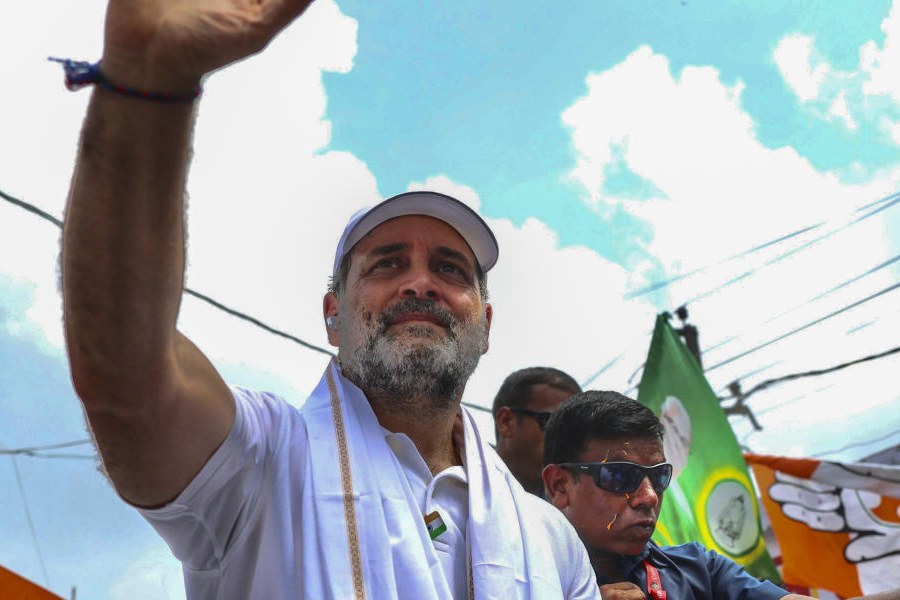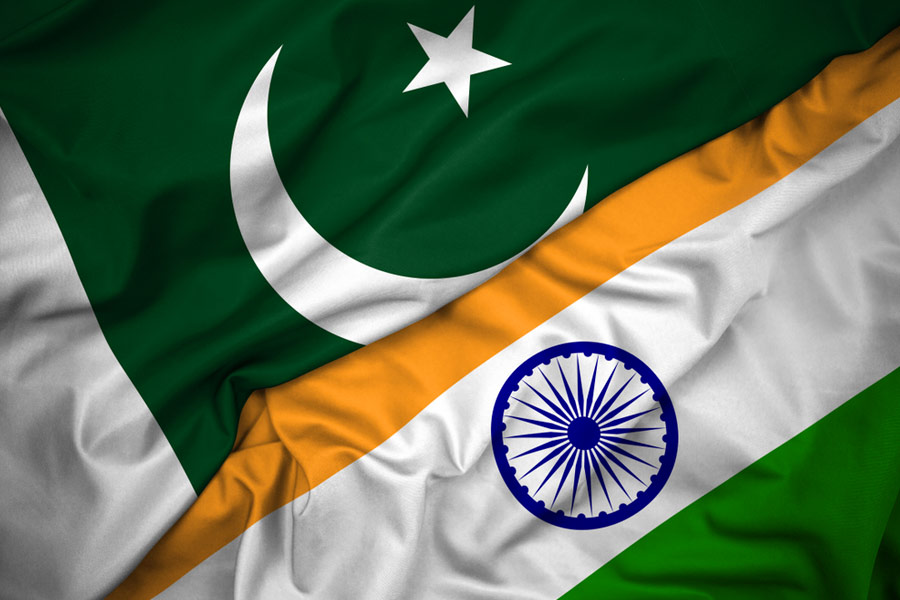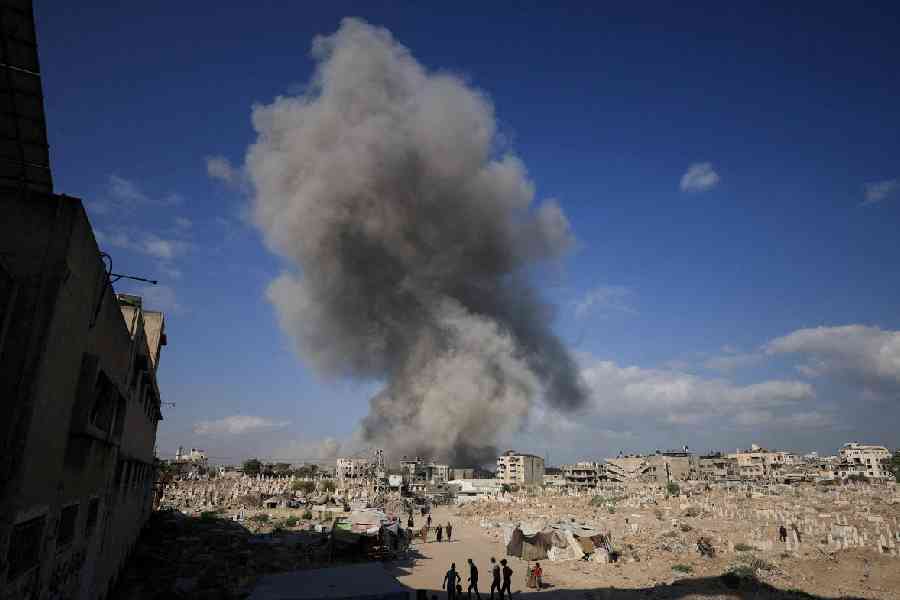
The giant billboards all over London show an image of a large house standing in manicured lawns. In the foreground, police wearing sola topis are beating up Indians and a white woman looks out at the world with a haughty gaze. The title says it all: Indian Summers.
The viewer is at once invited into a world of garden parties, pink gins, turbaned waiters, slow-moving ceiling fans, memsahibs, illicit romances and the call for Indian Independence. Raj nostalgia is back on British television.
For the next many weeks, starting February 15, Britons will be settling down on Sunday at 9pm - television's golden hour - for a show on Channel Four that claims to be a cross between Jewel in the Crown and Downton Abbey, costume dramas that have guaranteed a global audience and the sale of millions of box-set DVDs.
Thirty years ago, Jewel in the Crown (based on Paul Scott's novels) introduced viewers in India to Charles Dance, Geraldine James, Tim Pigott-Smith and Art Malik - and became Granada's most popular television series ever (even Satyajit Ray was said to have been hooked). Now the time seems ripe for the same producers to return to the heat and dust of colonial India.
Set in Shimla, the summer retreat of the British, the series starts in 1932, 15 years before Independence. India is on the edge. M.K. Gandhi has started his campaign for self-rule, but the British are firmly in control of their Empire. At the heart of the series is the Royal Simla Club, a social hub for British society in Shimla, which has a sign on the door proclaiming, "No Dogs, No Indians".
The club is owned by the widowed Cynthia Coffin, played by Julie Walters (known for her roles in Billy Elliot, Mamma Mia and as Mrs Weasley in the Harry Potter films). She is the queen bee of Shimla society, casting her net around the tight-knit community, influencing relationships and making matches. Nothing happens without her knowledge and approval.
Away from the pristine lawns and the English houses are the dreary Indian quarters occupied by the likes of the kind and liberal Parsi, Darius Dalal (Roshan Seth), injured during World War I, and living with his wife, the no-nonsense Roshana (Lilette Dubey), son Aafrin, a civil servant, and daughters Sooni (a firm nationalist) and Shamshad.

Tension erupts after the arrival of Alice Whelan, sister of Ralph Whelan, the private secretary of the viceroy, Lord Willingdon. Baby in tow, a bad marriage behind her and her head filled with modern ideas, Alice disrupts Coffin's carefully laid matchmaking plans for Ralph. Meanwhile, Aafrin is courting a Hindu girl, much to his parents' disapproval. Thrown in the melee is the missionary priest, Dougie, who is in love with the Indian helper in his orphanage, Leena, while his wife Sarah looks jealously on. The tangled web of romances and intrigues, set against the bigger drama and the burning political issues of Empire and race, is hoping to have Britain hooked.
What fascinated the writer of the series, Paul Rutman, was the life of ordinary people during the Raj. While on a holiday in Darjeeling with his Indian wife, he came across a stack of photos from the period in a colonial-era hotel. Always fascinated with India, ever since he had taught briefly in a boarding school in southern India, the photos gripped him.
"These were photos of people like us, 80 years ago, having tea parties and trying to recreate the idea of England in an environment that wasn't England... Empire is still something that many on the right are quietly proud of, but a source of deep shame and self-castigation from the left. With Indian Summers, I wanted to ride those contradictions. There's a generation that's dying out now for whom Empire was a huge part of their lives, so I wanted to ask the question: what did we think we were doing out there?"
Rutman wanted to tell the stories of the ordinary people - civil servants, missionaries, businessmen - who were wheeled out along with the Empire. His lead character is no aristocrat. Coffin is from the East End of London and first goes to India with her husband, a soldier in the British army. The couple gradually climb the social ladder when they started breeding horses and eventually take over the running of the Simla Club. The glamorous Coffin firmly believes that the British are doing the right thing. She has a strict code of ethics, which she is trying to cling to.
"The British in Shimla are in denial," said Rutman, about the characters in the series. "They are trying to turn the clock back to a time when things were simpler and everybody knew their place... even as the mood of the country pulled further away."
Rutman spent a year reading histories and memoirs for his research. He had advice on etiquette from Downton Abbey's consultant Alastair Bruce, and read the diary of a 94-year-old neighbour who was an area intelligence officer in Punjab during the war. Julie Walters, who admitted her knowledge of the Raj was limited to Jewel in the Crown and Gandhi, was given copies of Charles Allen's Plain Tales from the Raj and Margaret MacMillan's Women of the Raj to familiarise herself with the lives of ordinary Britons who went to India.
For Roshan Seth, who has played many a role in period Indo-British films, Indian Summers was different because it told the story of the people "on the next rung or two down the social ladder" on both sides.
"But the great theme is survival; it's the classic tangled web," Seth said. His gentle Anglophile character, Darius, is seen doing a jigsaw puzzle of London in the fog and reminds his family that "we owe a great deal to the British."
Despite its Indian theme, the series is not shot in location in Shimla, which the producers found had become too built up. Instead, the elegance of the Raj summer capital is re-created in Penang in Malaysia, where the buildings have a strong resemblance to colonial India.
The producers plan 50 episodes (five series with 10 episodes each) to play out over the next few years. Jewel in the Crown was first shown in 1984 and box-sets of the DVD continue to sell. Sixty-eight years after the British left India, it will remain to be seen if Indian Summers still wins viewers for colonial drama. Like Downton Abbey, which is showing on Indian television now, it probably will.










